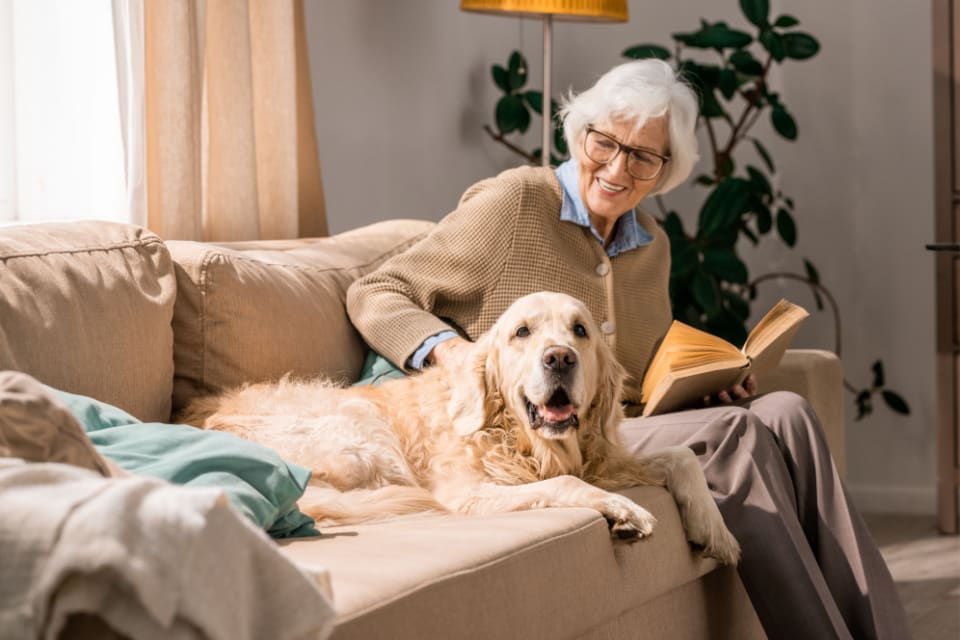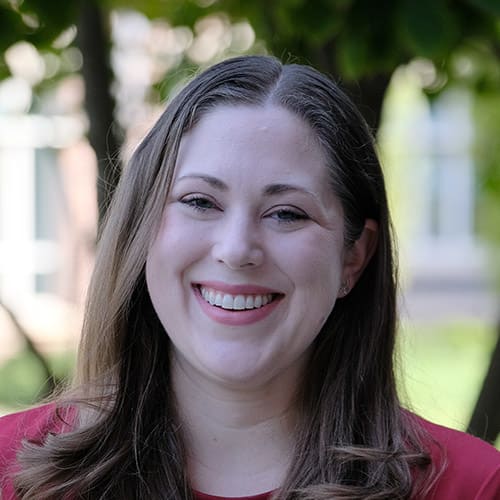
10 Surprising Facts About Senior Living
Senior living communities are quickly evolving to meet the changing needs of seniors. Modern communities help seniors create curated lifestyles and provide many benefits, from maintaining healthy habits to preventing social isolation. The 10 facts below highlight these modern senior housing options, assisted living activities, and more found among A Place for Mom’s network of over 100,000 senior living communities.
Let our care assessment guide you
Our free tool provides options, advice, and next steps based on your unique situation.
Key Takeaways
- Modern communities can ease the transition to assisted living. From neighborhood-like layouts and full social calendars to pet friendly accommodations, seniors experience familiarity and enrichment.
- Specialized senior living communities offer something for everyone. Some of our partner communities are tailored to specific religions, demographics, and interests.
- There are options for different budgets. Choose among luxury high-rise communities, mid-market senior housing, and more.
- A Place for Mom can help you find your best fit. Our Senior Living Advisors are here to assist seniors and their families with their search at no cost.
Fact #1: “80 is the new 65.”
Innovations in health care and a focus on prevention combined with exercise mean that seniors today can live longer, healthier lives. In the last 12 months, the average age of seniors A Place for Mom referred to senior living communities was 82. In the next two decades, the number of people over 65 will increase by 42% and the number of people over 85 will increase by 111%.[01]
In addition, the gender gap in life expectancy has narrowed since the 1990s, when there were only 67 men per 100 women in the over-65 population group. But by 2060, it’s predicted that there will be 86 men per 100 women in the over-65 age category.[02]
Fact #2: Senior living communities can feel like neighborhoods.
It can be intimidating to think about starting over somewhere new. Today’s senior living communities often have neighborhood-like designs to make the environment feel like home.
For example, Atria Cary offers a modern, neighborhood-like feel with convenient, on-site social activity spaces that really round out the community spirit:
- Bistro
- Cocktail lounge
- Fitness center
- Library
- Movie theater
- Putting green
- Restaurant
- Salon and barbershop
- Walking paths
Fact #3: Senior living can prevent social isolation.
Humans are social beings who generally desire to fit into a group of like-minded individuals. Seniors experience increased happiness, feel a sense of purpose, and typically live longer when they socialize with others in senior living environments like assisted living communities.[03]
With an array of on-site assisted living activities and amenities, senior living communities curate fun and engaging options for all residents to enjoy, avoiding the risks of social isolation for older adults. Senior living staff may even tailor activities to the unique interests and passions of residents.
Activities for seniors in assisted living typically include the following:
- Birthday and holiday celebrations
- Happy hours
- BBQs
- Musical performances
- Art and other educational classes
- Guest speakers
- Group trips
- Fitness classes
- Spiritual services
- Clubs and interest groups
Fact #4: Specialized senior living is on the rise.
Senior living communities tailor their offerings to meet the changing demographics and demands of older adults in the U.S. Examples include the categories below.
LGBTQ+ communities
More than 3 million people 50+ identify as LGBT, according to Services & Advocacy for LGBTQ+ Elders (SAGE), one of the oldest organizations dedicated to LGBTQ++ elder rights.[05] The senior living industry has responded with tailored LGBTQ+ communities that make aging adults in the LGBTQ+ community feel dignified and respected with specific services:
- Progressive medical care that affirms gender and sexuality
- Family support groups
- Respect for preferred pronouns and names
High-rise senior living communities
This metropolitan style is commonly found in assisted living communities in New York, Chicago, Los Angeles, and other major cities throughout the United States. A great example is Murano Senior Living in Seattle. Luxury assisted living communities in high-rise buildings may feature the following perks:
- Condo-style amenities
- Stylish, rooftop outdoor spaces
- Floor-to-ceiling windows with cityscape views
- Highly walkable locations within the city
Religion-based communities
Spiritual seniors can find communities with distinct services and amenities to match their religions. Religion-focused communities may include the following on-site accommodations:
- Specialized food services like kosher or halal
- Celebration of religious holidays like Rosh Hashanah, Ramadan, or Christmas
- Religious services or visits by religious leaders
Language-based communities
A language or cultural barrier can present a significant challenge upon entering senior living. Specialized communities may offer expanded language resources on their campuses. For example, Aegis Gardens Newcastle in Newcastle, Washington, offers:
- Staff who speak Filipino, Japanese, Korean, Mandarin, and Vietnamese
- On-site tea rooms
- Cantonese, Shanghainese, and Fujianese cuisine
- An art room featuring calligraphy, bonsai, painting, and more
LEED-certified communities
These “green” communities can be identified through their LEED, or Leadership in Energy and Environmental Design, status. The LEED rating system, developed by the U.S. Green Building Council, determines if a building’s design is environmentally friendly. Typical “green” senior living communities may feature:[05]
- Alternative power sources, such as solar or geothermal
- Greywater recycling or rainwater harvesting systems
- Design elements that reduce energy or water consumption, such as low-flow toilets
Fact #5: Seniors can keep their independence and privacy in senior living.
Senior living communities generally tailor services and care to meet the unique needs of each resident, and many seniors want the benefit of privacy. Across most states, assisted living communities help residents maintain a right to privacy and independence by offering different housing, schedule, and activity options.[06]

Let our care assessment guide you
Our free tool provides options, advice, and next steps based on your unique situation.
Assisted living staff and communities can empower your loved one to continue being themselves and living life as they prefer. For example, an introverted resident can choose to live alone, while an extrovert can choose to live with a roommate in shared housing. All residents are free to do the following:
- Invite family and friends over to visit often
- Snack and eat the foods they prefer, sometimes with input from professional dietitians
- Choose the activities and events they want to participate in
A Place for Mom’s free, local Senior Living Advisors can help you learn more about the freedoms available to your loved one at potential senior living communities.
Fact #6: Memory care focuses on the whole person, not just their dementia diagnosis.
Memory care is a type of assisted living designed specifically for older adults with dementia and cognitive decline. Specially trained memory care staff members tailor care to residents’ unique life journeys, personal preferences, and individual medical situations. Many communities offer memory care activities based on residents’ interests, passions, and prior occupations.
Memory care communities generally focus on holistic, person-centered care, meaning that traditional medical care is complemented with therapies to fit each resident’s individual needs. These programs may include:
- Music therapy
- Art therapy
- Drama therapy
- Scent therapy
Fact #7: Affordable assisted living options are becoming more popular.
Our senior living statistics show that the national median cost of assisted living was $4,807 per month in 2023.[07] While this may seem out of reach for seniors with a moderate budget, affordable senior living options are growing in popularity. In the U.S., some construction companies have begun building mid-market affordable senior housing options to meet demand.
These communities are designed for middle-income seniors and feature smaller units focused on the current trend toward minimalist living, with streamlined amenities and an emphasis on à la carte services. For example, the Senior Suites of Central Station in Chicago, Illinois, offers affordable housing based on residents’ income levels. Mid-market senior housing works especially well for affordable independent living, where personal and health care services are commonly à la carte.
Fact #8: Many senior living communities are pet friendly.
Studies have shown that owning a pet can lead to a healthier lifestyle. It promotes physical activity, improves emotional health, and reduces high blood pressure and cholesterol levels.[08]
With such research gaining popularity, it’s more common to find pet-friendly assisted living communities and senior living communities that allow pets in common areas. If your loved one doesn’t have their own pet, they can still enjoy the benefits of animals through on-site pet therapy programs.
For those with disabilities, service dogs and emotional support animals may be eligible to live in communities with no-pet policies through the protections afforded by the Americans with Disabilities Act or the Fair Housing Act.
You can find pet-friendly communities among A Place for Mom’s partner communities.
Fact #9: Owning a home may not make the most financial sense.
If your parents are retired, empty nesters with a large, multi-bedroom home, do they really need all that space and the costs attached to it? While it can be difficult to let go, it can make the most financial sense to part ways with the costs of homeownership.
Selling the home frees equity for more retirement funds.[09] Downsizing will decrease monthly expenses and alleviate the worry of rising property taxes or expensive homeowners insurance. Selling a house to pay for assisted living remains a common retirement strategy for seniors.
Senior living communities can also protect residents from unexpected expenses, like a leaky roof or a broken air conditioner. The community will typically handle things like maintenance, landscaping, and even snow shoveling.
Fact #10: Staying active is the best disease prevention, even if you’ve been inactive all your life.
Regular, low-impact exercise may be able to extend your loved one’s life and independence. Staying active is the best way to maintain good health, according the National Institute on Aging’s “Get Fit for Life” guidelines. The link between longevity and exercise for seniors has been researched and affirmed for decades.
Many senior living communities recognize the importance of exercise for the elderly, and they may feature fitness classes, gyms, weightlifting, and more. Exercise options at senior living communities also may increase lifespan through healthy socialization. Walking clubs, group classes, and personal training opportunities make it easy for seniors to build day-to-day social connections.
While chair yoga and gentle stretching may be perfect for some, other seniors may prefer a more adventurous active lifestyle. Here’s an example of some communities’ expanded activity options:
- Mountain biking trips to famed trails
- Group hiking trips through national parks
- Pursuing a black belt through martial art courses
- Practicing sunrise yoga flow on the beach
- Playing a lively game of pickleball with friends

Talk with a Senior Living Advisor
Test Our advisors help 300,000 families each year find the right senior care for their loved ones.
[1] Parkman, K. (2021, June 07). 2021 assisted living statistics: current data trends and projections.
[2] Mather, M. & Kilduff L. (2020, February 19). The U.S. population is growing older, and the gender gap in life expectancy is narrowing.
[3] National Institute on Aging. (2019, April 23). Social isolation, loneliness in older people pose health risks.
[4] SAGE and the National Resource Center on LGBT Aging. Facts on LGBT aging.
[5] U.S. Green Building Council. (2021). LEED rating system.
[6] Hg.org. Right to Privacy in Assisted Living.
[7] A Place for Mom. (2023). Cost of long-term care and senior living.
[8] American Heart Association. (2019, October 7). Can your pet help you be healthier?
[9] Dunleavey, M.P. (2017, July 26). Should you sell your home when you retire?
Senior living options in all states
The information contained on this page is for informational purposes only and is not intended to constitute medical, legal or financial advice or create a professional relationship between A Place for Mom and the reader. Always seek the advice of your health care provider, attorney or financial advisor with respect to any particular matter, and do not act or refrain from acting on the basis of anything you have read on this site. Links to third-party websites are only for the convenience of the reader; A Place for Mom does not endorse the contents of the third-party sites.
